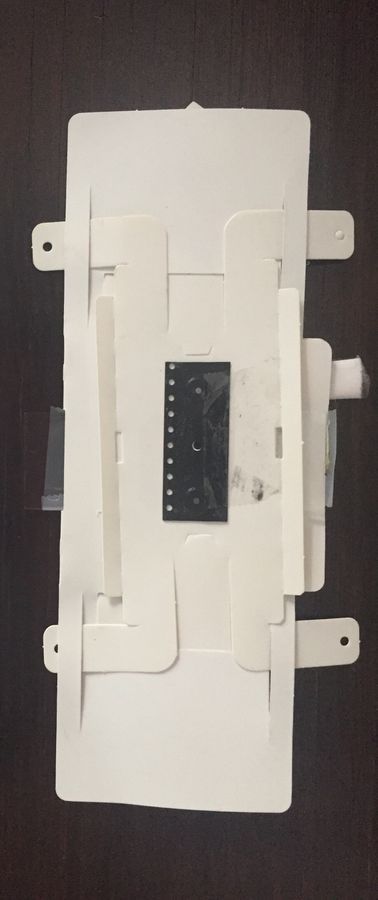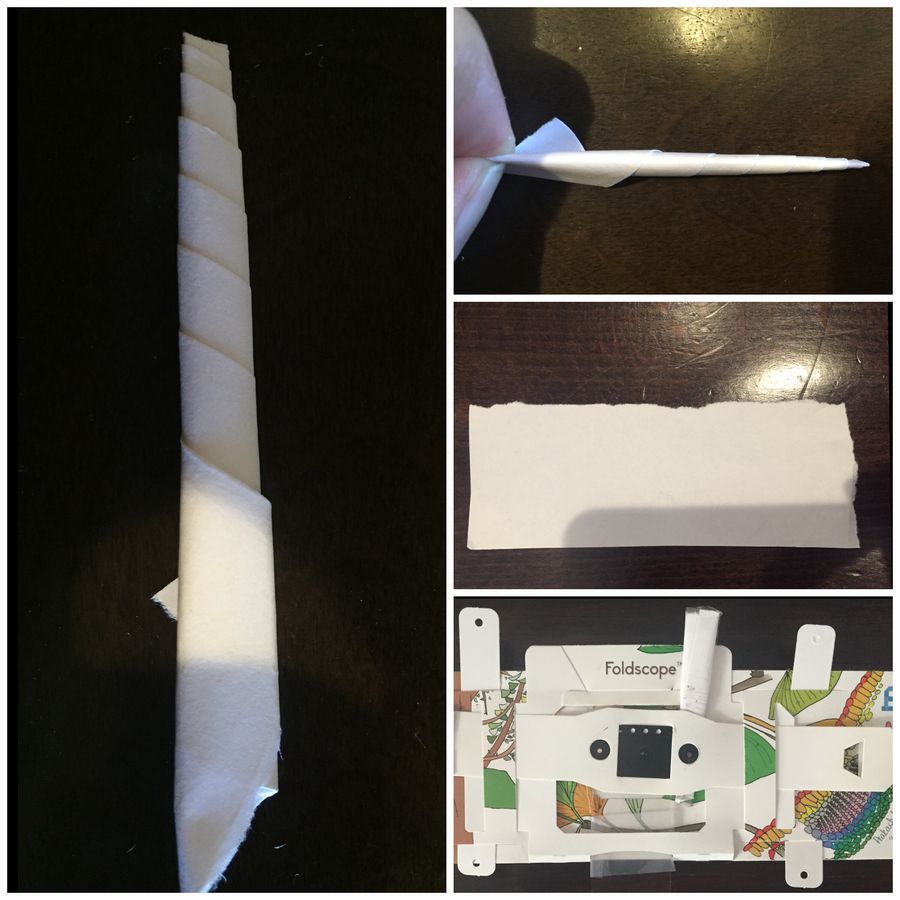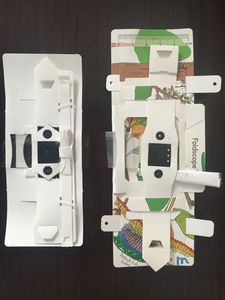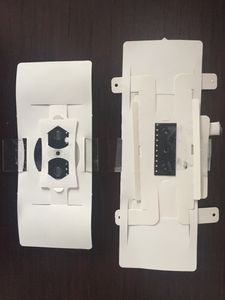Focuslocking, field of view locking and using ambient light (table lamp) as illumination
 May 16, 2016 • 10:01 AM UTC
May 16, 2016 • 10:01 AM UTC Unknown Location
Unknown Location 140x Magnification
140x Magnification Non-Living
Non-Living
Manu Prakash
I am a faculty at Stanford and run the Prakash Lab at Department of Bioengineering at Stanford University. Foldscope community is at the heart of our Frugal Science movement - and I can not tell you how proud I am of this community and grassroots movement. Find our work here: http://prakashlab.stanford.edu
266posts
1192comments
42locations

This is an important post for anyone who wants to improve your foldscoping technique. As has been written before; a microscope is two microscopes stuck to each other – the way you bring light into the microscope is as important as the way you collect light (objective). Specially paying close attention to what kind of illumination you are using will allow you to get fantastic images.
Many of the features described here will be standard in “next generation” Foldscope that will ship in phase 2. But here is a simple method you can implement all of them (and more) with the instrument you already have. Simple.
Further, I will try to show how to go smoothly between 1) transmitted light illumination 2) angular illumination for high contrast of nearly transparent samples (cells) and 3) dark field. Before you will invest your 10 minutes replicating this post with your own Foldscope; let me convince you that it’s worth it to pay close attention and follow the steps.
Here is a data set I collected with the tricks I am about to describe. Notice the following a) the field of view (FOV) is uniformly illuminated (b) I have a stable focus (it’s not going in and out of the focus) (c) My movements in XY plane of the stage are smooth (fields don’t jump) (d) and if you watch it all the way to the end, you will notice o switch to a (pseudo) phase contrast and a darkfield – all in the same video. Finally you should notice the resolution of the video – if you are not getting sharp images; you can try some of these tricks to improve your images (as a start, always clean the lens with just a tiny drop of water and tissue paper to get any gunk from your prior experiments).
Many of the features described here will be standard in “next generation” Foldscope that will ship in phase 2. But here is a simple method you can implement all of them (and more) with the instrument you already have. Simple.
Further, I will try to show how to go smoothly between 1) transmitted light illumination 2) angular illumination for high contrast of nearly transparent samples (cells) and 3) dark field. Before you will invest your 10 minutes replicating this post with your own Foldscope; let me convince you that it’s worth it to pay close attention and follow the steps.
Here is a data set I collected with the tricks I am about to describe. Notice the following a) the field of view (FOV) is uniformly illuminated (b) I have a stable focus (it’s not going in and out of the focus) (c) My movements in XY plane of the stage are smooth (fields don’t jump) (d) and if you watch it all the way to the end, you will notice o switch to a (pseudo) phase contrast and a darkfield – all in the same video. Finally you should notice the resolution of the video – if you are not getting sharp images; you can try some of these tricks to improve your images (as a start, always clean the lens with just a tiny drop of water and tissue paper to get any gunk from your prior experiments).
Note: the title of the video if named “puzzle” since I am going to ask people to identify as many different ciliates in this sample. That’s for the next post – this post is about technique; the second post will be about the magic of this “small world”.
Now – this was all done using a “regular ” Foldscope (no light module/LED) and data collected on my iphone6. I also have an old iphone5 and often get comparable (or even slightly better data) using the same. Clearly the lens provides the resolution, and you should be able to capture it easily. All, using a simple table lamp.. So let’s get started.
What you need before you start:
1) Regular Foldscope (without a light module); just lens, magnetic coupler mounted in Foldscope and your cellphone with the open back where illumination module goes.
2) One extra magnetic coupler (for mounting at the back for field of view locking.
3) an A4 sheet of paper to make a “wedge” by rolling a small piece of paper. Here wedge is defined as a piece which starts with very small thickness and increases in thickness. Something like a shallow angle incline plane.
4) A small piece of tape, to make the “wedge” smooth by taping on top of it.
5) Any table lamp. Clearly you should try different table lamps to get different results – but start with what’s on your desk. The one on my desk has a thick white glass diffuser on it; and it’s a little “yellow” in color.
In short, the idea is to have start with regular assembled Foldscope (with regular magnetic coupler) but no illumination module. This is the most common Foldscope we ship to classrooms around the world.
Next, we want to mount an extra magnetic coupler taped where we usually put the illumination module. This will attract the already embedded magnetic coupler to create a pull force brining the lens at a fixed height to the sample. This magnetic coupler also acts as a “spring” always attracting the lens close to the sample.
Now – this was all done using a “regular ” Foldscope (no light module/LED) and data collected on my iphone6. I also have an old iphone5 and often get comparable (or even slightly better data) using the same. Clearly the lens provides the resolution, and you should be able to capture it easily. All, using a simple table lamp.. So let’s get started.
What you need before you start:
1) Regular Foldscope (without a light module); just lens, magnetic coupler mounted in Foldscope and your cellphone with the open back where illumination module goes.
2) One extra magnetic coupler (for mounting at the back for field of view locking.
3) an A4 sheet of paper to make a “wedge” by rolling a small piece of paper. Here wedge is defined as a piece which starts with very small thickness and increases in thickness. Something like a shallow angle incline plane.
4) A small piece of tape, to make the “wedge” smooth by taping on top of it.
5) Any table lamp. Clearly you should try different table lamps to get different results – but start with what’s on your desk. The one on my desk has a thick white glass diffuser on it; and it’s a little “yellow” in color.
In short, the idea is to have start with regular assembled Foldscope (with regular magnetic coupler) but no illumination module. This is the most common Foldscope we ship to classrooms around the world.
Next, we want to mount an extra magnetic coupler taped where we usually put the illumination module. This will attract the already embedded magnetic coupler to create a pull force brining the lens at a fixed height to the sample. This magnetic coupler also acts as a “spring” always attracting the lens close to the sample.

This is what your Foldscope should look like from the back. Make sure that the illumination hole is not blocked (so light can come in). The magnets will keep the coupler in place; but you want to put a piece of tape for added security.
Now, you have achieved field of view locking; where when you find something and pass the Foldscope to a friend, you will not loose your field that you were observing previously.
Second; let’s solve focus locking. I have shared several tricks previously for focus locking; but here I will describe a wedge that allows for the lens to a) move in small increments b) stay at the same location while the field of view is moved.
Take an A4 sheet of paper and cut it along the long axis – 1inch wide and 3 or 4 inch long. Now roll the sheet into a cylinder (from one end) along the short axis. Hold the inside of the roll and pull on it – making a little tower being pulled out of the roll. Pull 2 to 3 inches; so you have a rolled up paper, but one end is very thin (center of the roll) and another end is thick.
Once you are done making the “wedge” – please remember to cover it with tape – to make it smooth.
Now, you have achieved field of view locking; where when you find something and pass the Foldscope to a friend, you will not loose your field that you were observing previously.
Second; let’s solve focus locking. I have shared several tricks previously for focus locking; but here I will describe a wedge that allows for the lens to a) move in small increments b) stay at the same location while the field of view is moved.
Take an A4 sheet of paper and cut it along the long axis – 1inch wide and 3 or 4 inch long. Now roll the sheet into a cylinder (from one end) along the short axis. Hold the inside of the roll and pull on it – making a little tower being pulled out of the roll. Pull 2 to 3 inches; so you have a rolled up paper, but one end is very thin (center of the roll) and another end is thick.
Once you are done making the “wedge” – please remember to cover it with tape – to make it smooth.

To insert the wedge, first mount your slide and after that – slip in the wedge right next to the slide (as a guide). Either right or left side. The wedge should be “under” the magnetic coupler on the top side, so when you slide it – it should lift the top magnetic coupler and also lift the lens.
Now, you are ready to use the new “focus locking; field of view locking” Foldscope. Now you move your field of view just like the old mechanism (with two hands on the two tabs). But for focus of you push or pull the “wedge” in and out. The distance the wedge is in – controls the height of the lens. Once you leave the wedge – the lens remains at that height forever (because of the magnets keeping it down).
Finally, mount your Foldscope the same way you have done before.
Note: always mount your phone magnetic coupler properly; so your field of view is not obscured. I usually image in video mode (don’t know when I will see something remarkable) and also zoom in a little to cut out the circular FOV block.
Now; you can still use your regular light module the same way. But in this post; I am going to share some tricks to use a table lamp for a very stable and bright light source – and use angular illumination to obtain pseudo phase contrast and dark field. First – here is a video of the effect I am interested in.
Now, you are ready to use the new “focus locking; field of view locking” Foldscope. Now you move your field of view just like the old mechanism (with two hands on the two tabs). But for focus of you push or pull the “wedge” in and out. The distance the wedge is in – controls the height of the lens. Once you leave the wedge – the lens remains at that height forever (because of the magnets keeping it down).
Finally, mount your Foldscope the same way you have done before.
Note: always mount your phone magnetic coupler properly; so your field of view is not obscured. I usually image in video mode (don’t know when I will see something remarkable) and also zoom in a little to cut out the circular FOV block.
Now; you can still use your regular light module the same way. But in this post; I am going to share some tricks to use a table lamp for a very stable and bright light source – and use angular illumination to obtain pseudo phase contrast and dark field. First – here is a video of the effect I am interested in.
In the video above; I start with bright field and at 30sec Mark – switch to “pseudo” phase contrast. You can see the difference – since internal organelles which have a slightly different refractive index are visible.
Next; take a look at switching between brightfield, phase ad dark field ( those little dots you see are bacteria – yes bacteria) . Isn’t that exciting 🙂
Next; take a look at switching between brightfield, phase ad dark field ( those little dots you see are bacteria – yes bacteria) . Isn’t that exciting 🙂
In this video – we start with dark foeld, switch to pseudo phase and go to brightfield and back. As you can see – something that is completely invisible in bright field – comes alive in phase and dark field. That’s why I am so excited about everyone to get good at this technique.
So – what’s the trick. It’s simple; I am just changing the angle of my illumination. I start with a uniform light source (like a table lamp); and just title my Foldscope ever so slightly to switch from brightfield (straight on) to phase (slightly tilted) to dark field (really tilted). It’s almost that in dark field – I am not even looking at the lamp.
I made a quick video to demonstrate this technique. I was speaking very softly here – so please turn the volume UP to hear me.
So – what’s the trick. It’s simple; I am just changing the angle of my illumination. I start with a uniform light source (like a table lamp); and just title my Foldscope ever so slightly to switch from brightfield (straight on) to phase (slightly tilted) to dark field (really tilted). It’s almost that in dark field – I am not even looking at the lamp.
I made a quick video to demonstrate this technique. I was speaking very softly here – so please turn the volume UP to hear me.
To show you the difference between different kind of light sources; I tried different illumination and got different results. The key is to have a nice bright table lamp that has some kind of diffuser glass on it.
Here is using “cellphone flash light” as a light source. Because it’s a point source – you see artifacts from the illumination.
Here is using “cellphone flash light” as a light source. Because it’s a point source – you see artifacts from the illumination.
Now, for comparison – here is data wth my normal “light module” that comes with standard Foldscope.
As comparison; I often also use the bright sky (not directly the sun) and get data this way. Please share and compare different illumination. You can also add a little bit of “color transparency” to add colored backgrounds to your data sets.
I really hope that you all try to follow this and implement ideas here carefully and share your experiments. It’s crucial to get the best quality data so we can ask incredible questions nobody has asked before. If you have difficulty implementing this – please ask questions in comment box below.
Happy tinkering.
Cheers
Manu
Note 1: a lot of incredible biology is at show in this post. I will be making a lot of different posts to highlight and share the same.
Note 2: here is an image of “next gen” Foldscope we are testing with Foldscope super users. If you have greater than X number of Foldscope posts on the website – we send you new things we are trying. So you want to test the next gen – become a Foldscope super user by sharing more.
I really hope that you all try to follow this and implement ideas here carefully and share your experiments. It’s crucial to get the best quality data so we can ask incredible questions nobody has asked before. If you have difficulty implementing this – please ask questions in comment box below.
Happy tinkering.
Cheers
Manu
Note 1: a lot of incredible biology is at show in this post. I will be making a lot of different posts to highlight and share the same.
Note 2: here is an image of “next gen” Foldscope we are testing with Foldscope super users. If you have greater than X number of Foldscope posts on the website – we send you new things we are trying. So you want to test the next gen – become a Foldscope super user by sharing more.


Note 3: wait for my next post for the bizarre number of ciliates that I am sharing in this post. It’s got something to do with Mother’s Day.
Sign in to commentNobody has commented yet... Share your thoughts with the author and start the discussion!

 0 Applause
0 Applause 0 Comments
0 Comments
















